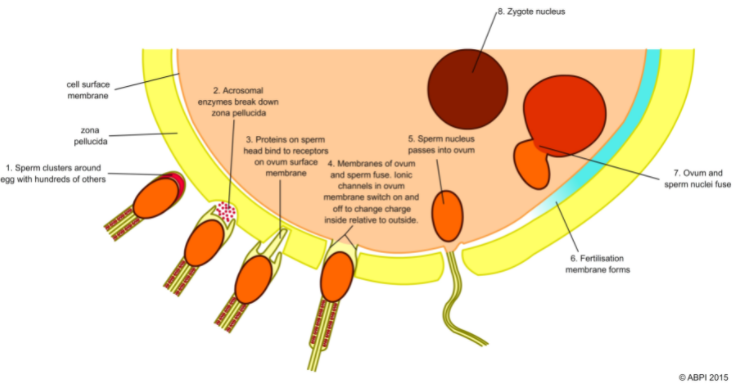This topic takes on average 45 minutes to read.
There are a number of interactive features in this resource:
 Biology
Biology
 Chemistry
Chemistry
 Human biology
Human biology
The final stage of meiosis in the ovum doesn’t take place until the sperm starts to penetrate the surface cell membrane. Then it is mitosis all the way to produce the billions of cells needed to make a new individual – until the first meiotic divisions take place to form the oocytes in the ovaries if the fetus is a girl.
It takes many sperm to fertilise an egg, although only one will penetrate the ovum. The enzymes from many acrosomes are needed to digest away the protective zona pellucida. When the head of a single sperm touches the membrane of the ovum it triggers a number of changes

Sperm entering the ovum
Produce an infographic on meiosis and mitosis in human beings – find out as many useful and interesting facts as possible about length of divisions, number of divisions, number of cells made etc and display as effectively as possible.
